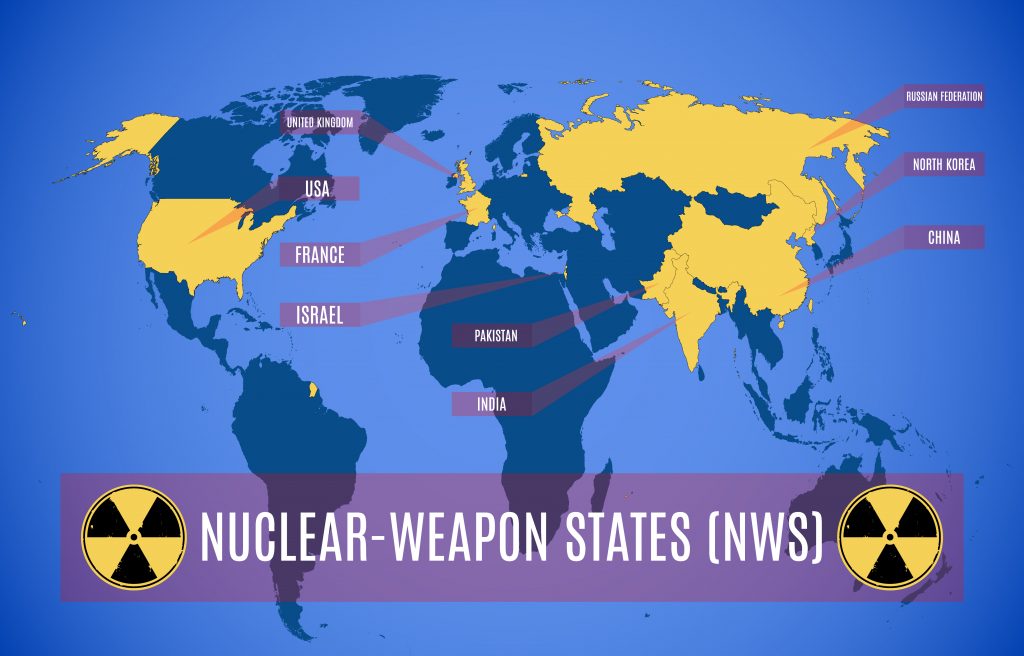Where Are The Nuclear Weapons In The World
The Pentagon has outlined how it wants to revamp the US nuclear arsenal, and develop new low-yield bombs, largely in response to the threat from Russia.
Reality Check looks into where the world’s nuclear weapons are located and who owns them.
While the global stockpile of nuclear weapons has shrunk significantly since the Cold War, there are hundreds of warheads that could be launched at short notice, and experts say every nuclear-armed nation is modernising its arsenal or has plans to do so.
Countries keep most details of their nuclear weapons secret, but it is known that nine countries own the estimated more than 9,000 nuclear weapons that are in military service. These are either deployed – mounted on land or sea missiles and kept at air bases – or in storage. About 1800 are on high alert and could be fired with little warning.
The US and Russia own the vast majority of the world’s nuclear weapons.
Including retired warheads waiting to be dismantled, the total is said to be almost 15,000, according to the Stockholm International Peace Research Institute (Sipri). This is a marked decline since the 1980s when the figure peaked at around 70,000.
Why only these countries?
Since 1970, 190 countries including the US, Russia, UK, France and China have joined the Non-Proliferation Treaty (NPT). India, Israel and Pakistan never signed the agreement and North Korea left in 2003. The NPT recognises five states having nuclear weapons – US, Russia, France, UK and China – all of which had tested nuclear weapons before the agreement came into effect.
Under the agreement, these countries should not maintain an arsenal forever.
The treaty prohibits non-recognised states from developing nuclear weapons. South Africa, and former Soviet Union countries Belarus, Kazakhstan and Ukraine have all given up theirs.
Are countries making progress on disarmament?
The US, UK and Russia have all been reducing the size of their warhead inventories, Israel’s and France’s are said to be relatively unchanged and China, Pakistan, India and North Korea are believed to producing more, according to the Federation of American Scientists.
But at the very least, experts say, every nuclear-armed state has plans in place to modernise its nuclear stockpile.
Modernisation is contrary to the spirit of the Non-Proliferation Treaty, says Shannon Kile, head of Sipri’s nuclear project.
The UK is planning to replace its fleet of Vanguard nuclear armed submarines, which carries its Trident nuclear missiles. The overall size of its arsenal will be reduced to no more than 180 by the mid-2020s.
The US may spend more than $1 trillion (£703bn) by the 2040s upgrading its nuclear capabilities. Some of America’s warheads can be found around Europe in Belgium, Germany, Italy, Netherlands, and Turkey, which host around 150 warheads between them.
North Korea conducted its sixth nuclear test in September and the jury is still out on whether Kim Jong-un’s nuclear programme is capable of attaching a warhead to a long-range missile.
In recent months, North Korea has demonstrated it has increasingly advanced missiles, which are said to have brought the United States within range.
Will there ever be a nuclear-free world?
A few months into his presidency, Barack Obama told a crowd of thousands in Prague that under his watch, America would commit “to seek the peace and security of a world without nuclear weapons”. It appeared as though the world edged closer in July 2017 when more than 100 countries endorsed a UN treaty to ban nuclear weapons altogether.
So far dozens of countries have signed the legally binding instrument, the first agreement of its kind to explicitly ban nuclear weapons. However the nuclear-armed states boycotted the negotiations.
The UK and US say they never intend to join the treaty because it undermines the NPT. Allied Nato countries also failed to acknowledge the new agreement.
The International Campaign to Abolish Nuclear Weapons (Ican), the organisation behind the treaty, was awarded the 2017 Nobel Peace Prize.

